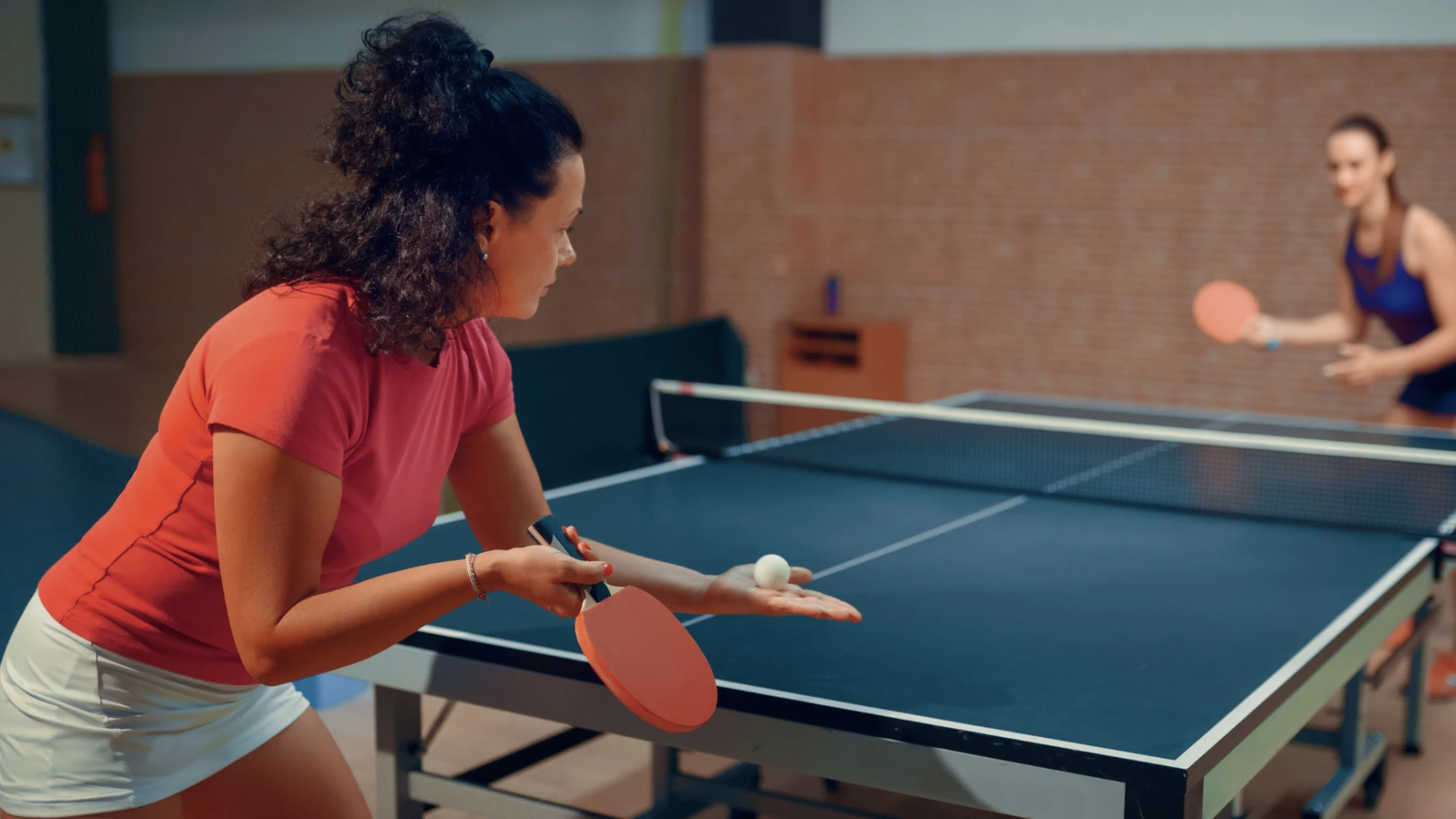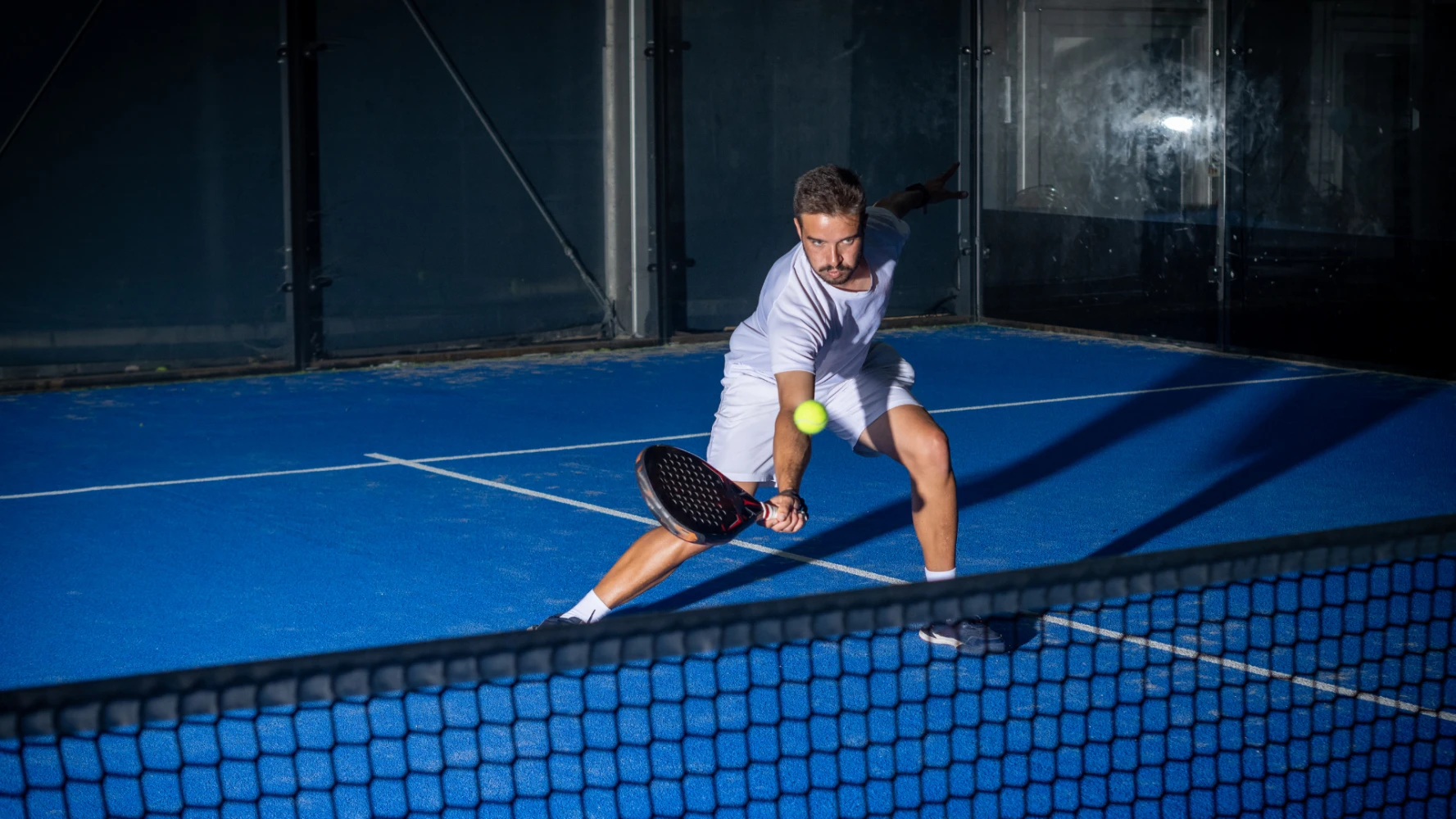Padel is won at the net, and survival in that position depends entirely on your ability to handle your opponents' lobs. Unlike in tennis, the goal is not to smash to win the point, but to execute intermediate shots that neutralize the opponent and maintain your offensive position. These shots are the Bandeja and the Víbora. Here is how to differentiate them, execute them, and use them wisely.
The Bandeja: The Neutralization Shot
The Bandeja is the shot of safety and depth.
Objective Its main goal is neutralization: sending the ball deep and slowly into the opponent's court, ideally along the side glass, in order to force the opponent to stay on the defense and give you time to return to the net for the volley.
Execution Technique
Preparation: Move back from the net using shuffle steps (lateral) to keep your body facing the play. The non-hitting arm points at the ball. The racket is held high above the shoulder, the wrist cocked, as if you were holding a tray (Bandeja is Spanish for tray).
Point of Impact: Hit the ball in front of you (slightly ahead of the body axis) and at shoulder or forehead height. This is the easiest impact to control.
The Motion: The movement is a slice shot executed from top to bottom and from outside to inside. This inverted spin makes the ball float slowly and die after the bounce on the ground, making the return difficult.
Finish: The arm finishes along the body, towards the opposite hip, to ensure good rotation.
The Víbora: The Attacking Shot
The Víbora (Viper) is the aggressive and faster version of the overhead shot.
Objective Its goal is to generate maximum pressure and surprising angles. The fast lateral spin makes the ball shoot out to the sides after bouncing off the glass.
Execution Technique
Preparation: Similar to the Bandeja, but the racket is slightly higher and the body is oriented a bit more sideways.
Point of Impact: Hit the ball closer to the body and later (slightly behind the body axis) and higher than the Bandeja.
The Motion: The movement is an aggressive side-spin shot. The shot is closer to a flat smash with a strong wrist flick. Aim for the edge between the side glass and the fence/grille. The side spin makes the ball "slide" after the bounce and accelerate towards the grille or the back glass.
Finish: The arm finishes above the shoulder or towards the front, following a strong wrist whip.
The Crucial Choice: When to Use Bandeja or Víbora?
The true art lies not in the execution, but in the decision. The choice between these two shots depends on the lob's depth and your position on the court.
Opt for the Bandeja (Safety and Time):
Very Deep and High Lob: This is the default choice. The Bandeja is the most reliable shot to gain time, ensure the ball lands before the service line, and allow you to return to the net.
Opponent Pressure: If the opposing team is pressuring you at the net, the Bandeja is the most reliable shot to reset the rally and regain a safe position.
Opt for the Víbora (Attack and Angle):
Short or Medium Lob: The ball is easier to attack. The speed and lateral spin of the Víbora are perfect for preventing the opponent from positioning well.
To Open the Angle: The aggressive side spin allows you to open the angle more effectively, forcing the opponent to move wide on the court to defend and leaving open spaces.
Conclusion: Mastery Comes with Discipline
Mastering the Bandeja and the Víbora requires discipline. Forget the tennis instinct that pushes you to smash hard. These two shots are tactical tools that allow you to manage space and time on the court.
To improve, the most important drill is to practice the lob routine: retreat with shuffle steps, take the time to hit the slice of the Bandeja or the whip of the Víbora, and then immediately return to the net. The repetition of these motions is the secret of all great padel players.




Comments